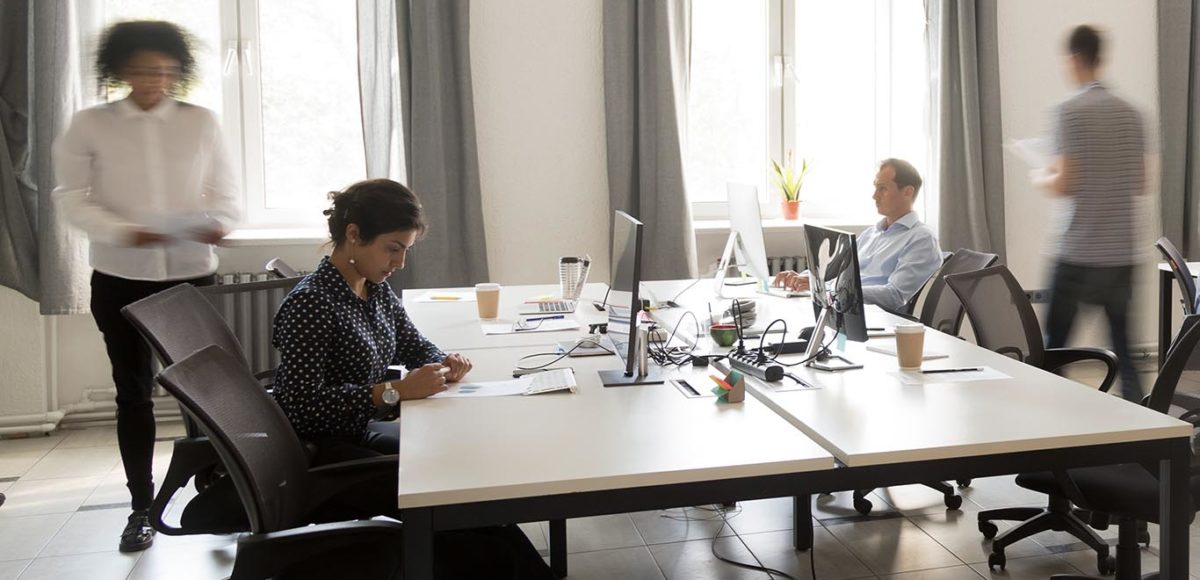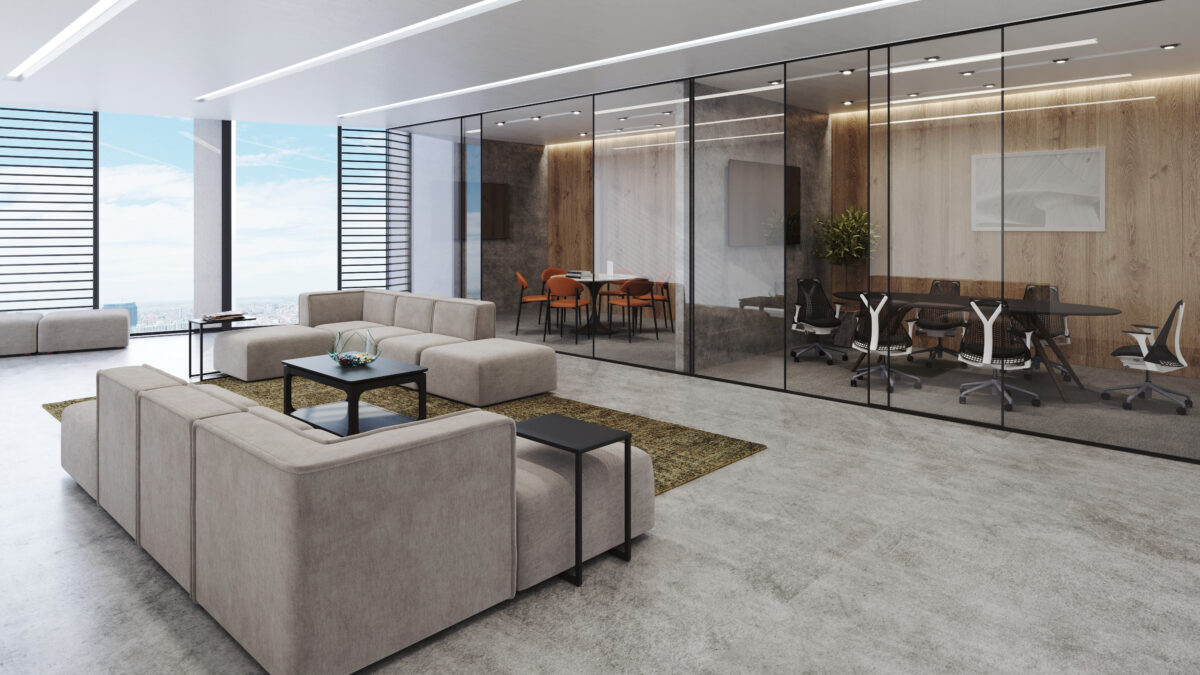In early May 2022, a quiet headline caught surprisingly little attention. An Apple executive resigned from his senior-level position in protest of the company’s return to work policy, which required employees to come into the office three days per week. He has since reportedly joined Google, which has relaxed its return to work policy to allow some employees to continue working remotely.
While this may be the first high-level executive resigning over a lack of flexibility, it’s not an isolated occurrence. According to the U.S. Bureau of Labor Statistics, 4.5 million workers quit their jobs in March 2022. A recent FlexJobs survey intended to gain deeper insight into why employees are quitting in droves revealed that 62% quit because of toxic company culture, 42% because of burnout, and 41% because of the lack of flexibility.
This underscores the driving need for workplace flexibility — not just to attract and retain top talent, but also to support a healthy company culture and to create a physical workspace that fulfills the needs of the workforce. Flexibility is paramount for the future of the workplace.
What is “Permanent Flexibility” in the Workplace?
There’s no single solution that fits every scenario or solves the issues faced by every organization across the board. In fact, there’s no single solution that an organization can apply as a one-and-done fix. Instead, navigating the future of the workplace requires a continual process firmly rooted in a solid understanding of what employees need from the office when they come in, how space is actually used, and the configurations that can best support employee productivity.
Although there’s no blueprint that every organization can use to guide the way forward, there is a solution: workplace flexibility. This is what allows organizations to pivot faster and easier to accommodate changing needs. That’s where becoming a Permanently Flexible® workplace comes into play.
To achieve this, we believe it takes a four-step process: experiment, measure, modify and repeat. It’s a process that depends on having effective tools and a commitment to the ongoing need to shift along with the changing needs of the workforce and the workplace.
Why Is It Important?
The workplace is no longer strictly necessary. By and large, employees don’t have to come to the office for the company to survive and thrive. Additionally, the unpredictability of today’s continually shifting landscape is demanding that many leaders rethink their office footprint and how their space is used.
The pandemic has accelerated many of the trends that were already gaining traction before COVID disrupted the globe. It also amplified the need for flexibility in all aspects of an organization — including its policies and procedures, and its use of the workplace — in order for the organization to remain viable long-term. The organizations that have successfully weathered the pandemic have been willing to implement flexibility and continually adjust and experiment to discover what works best at the moment.
What Could Permanent Flexibility Look in Your Office?
So what does that look like? We believe that some real-world examples can help you better envision how permanent flexibility could look in your workplace.
What Do You Need to Create a Permanently Flexible Space in Your Office?
There’s a tremendous amount of unpredictability right now. And that’s something that will likely continue for years to come. Implementing permanently flexible office space now can help businesses seamlessly shift as needs evolve. We believe that every workplace should include 10–15% flexible workspace that can be used according to the organization’s needs.
What’s needed to make that happen? You need three essential elements: Flexible furniture solutions, workplace technology that supports flexibility, and accurate data.
1. Flexible Furniture Solutions
By nature, the flexible portion of any office is likely to change from time to time as needs evolve. To make that happen quickly and efficiently, you need office furniture that can change with you.
One of CORT’s innovative solutions to support permanent flexibility is what we call “Furniture-as-a-Service” or CORT FaaS™. As much as software allows for fast and easy updates, FaaS empowers organizations to become more responsive and capable of modifying their plans.
That’s the beauty of access over ownership that you get with furniture rental. You get stylish, comfortable furniture that meets your needs without the need to maintain it. While permanent assets are often a barrier to flexibility because of the costs and the difficulty in making modifications, FaaS is strategic. It alleviates glut and supports endless iterations on what the office can look and function like — both today and in the future.
Imagine, for example, if you wanted to transform an unused private office into a huddle room. This small meeting space will allow teams and small groups to meet quickly and efficiently to encourage collaboration, but the furniture it needs is entirely different from what’s in there. Instead of a single desk, chair, and storage, you’ll need a central work surface with multiple chairs in addition to audio-visual equipment like speakers, cameras, and microphones for video conferencing. With CORT office furniture rental, you could reconfigure and have new furniture delivered and set up for you within three to five days.
And when the office’s needs change and you need to convert that space from a huddle room to another type of workspace? CORT will come and pick everything up and replace it with the furniture that works best for the space’s next iteration.
2. Workplace Technology That Supports Flexibility
Space utilization sensor technology and space optimization data are another set of critical tools that support a permanently flexible workplace. These discreet devices provide data-driven insights that leaders and decision-makers can use to make important decisions about the office footprint and usage of various spaces.
Choosing the right space utilization sensors is essential. 4SITE by CORT offers secure workplace analytics without compromising privacy or security. It operates on its own secure network and features security protocols and data encryption to protect personally identifiable information in addition to backing up each organization’s data on a secure platform.
3. Accurate Data to Remain Ahead of Potential Disruptions
Although the data that’s collected from workplace sensors is separate from the sensors themselves, effective sensors and accurate data go hand in hand. This critical workplace technology allows for easy, efficient, and accurate space optimization and the collection of key data points, including what space is used in the workplace and how long it’s used.
Having access to real-time space optimization data is like conducting an ongoing, extensive occupancy study without worrying about human error. Instead, you get reliable information that’s needed to make decisions, evaluate how new configurations are working, and reevaluate real estate assets on a larger scale. Sensor data is critical for leaders to gain real-time understanding and insight into how people utilize the workplace. It’s also the key to monitoring how the workforce embraces the permanently flexible space, allowing for ongoing informed decisions.
Experiment, Measure, Modify, and Repeat in Your Workplace with CORT Permanely Flexible™ Solutions
As we’ve all learned over the past few years, the only thing that won’t change is that things will keep changing. There have been seismic shifts in the workplace, and the needs of businesses and the workforce alike continue evolving.
We understand there’s no “right” way of doing things right now. But we do believe that organizations that commit to permanent flexibility position themselves to discover new and innovative solutions to best meet the needs of their unique workforces. Likewise, permanent flexibility allows for easier, more efficient pivoting to weather the ever-changing conditions.
By collaborating with experienced partners like CORT and 4SITE, you’re effectively arming your organization with the tools needed to embrace continuous change. Discover the power of CORT furniture rental and the accuracy of 4SITE sensor technology today to learn more about how the experiment, measure, modify, and repeat process can help transform your workplace strategy and support your organization as it becomes Permanently Flexible for ongoing success.






